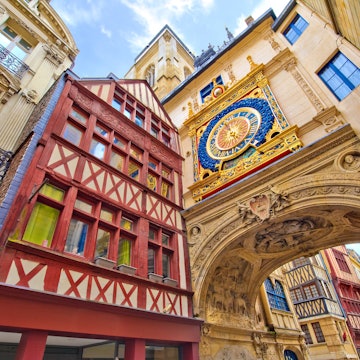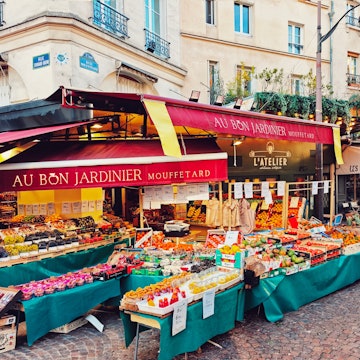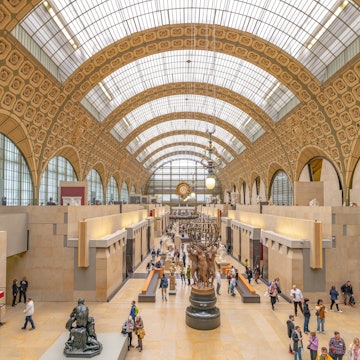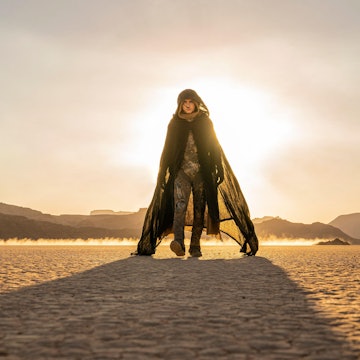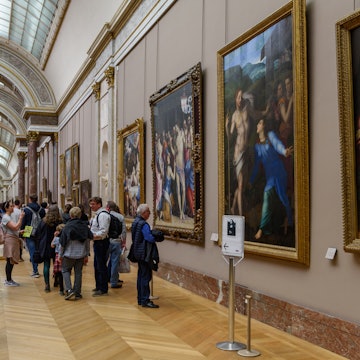
Discover the Louvre's hidden treasure in this lesser-visited wing

May 13, 2021 • 5 min read

The Cour Marly is filled with 17th- and 18th-century French sculptures © Bernard Jaubert / Getty Images
Who doesn't want to walk in the footsteps of Beyonce and Jay-Z? The world-famous couple's stroll through the Musée du Louvre for their 2018 music video Apes**t has brought a record-breaking 10.2 million visitors to the iconic building. But the spotlight isn't for everyone, bypass the crowds and explore the Louvre's quieter corners in its treasure-packed Richelieu wing instead.

Named for French clergyman, nobleman and statesman, Cardinal Richelieu (1585–1642), the Richelieu is one of the Louvre’s three vast wings (along with the eastern Sully wing and southern Denon wing), running parallel to the rue de Rivoli on the northern side. Away from the museum's busiest galleries, here visitors will unearth magnificent sculptures, Mesopotamian antiquities, Second Empire apartments, decorative arts, and monumental French and northern European canvases.
Cour Marly
Accessed through the Louvre's subterranean entrance area Hall Napoléon, Cour Marly is a spectacular glass-roofed courtyard on the lower ground and ground floors. It's filled with 17th- and 18th-century French sculptures commissioned by Louis XIV and Louis XV for the Château de Marly, in Paris' west, which was destroyed during the Revolution.
Dominating the split-level space are four pedestalled marble horse statues. Antoine Coysevox' Fame and Mercury, account for two of them, showing two gods astride the winged horse Pegasus, while the second pair are part of Coysevox' nephew Guillaume I Coustou’s work Horses Restrained by Grooms (aka Marly Horses), completed in 1745.
Other highlights here include Coysevox' trident-wielding Neptune, completed in 1705, and the pair of figures Apollo Pursuing Daphne (circa 1713–14) by Guillaume I Coustou (Daphne) and his brother Nicolas Coustou (Apollo), capturing the speed and flight before Daphne was transformed into a laurel tree to escape the sun god Apollo.
French sculptures
On the western side of Cour Marly's ground floor, magnificent French sculptures dating from 500 to 1850 AD include several by Germain Pilon (1540–90), considered France's greatest 16th-century sculptor. Also here is the Fountain of Diana. Believed to date from around 1550, it portrays Diana, the goddess of hunting, reclining against a stag, accompanied by her two dogs, a greyhound and a water spaniel.
You might also like: How to spend a perfect weekend in Paris

Mesopotamian antiquities
Reached from the eastern end of Cour Marly is the Louvre's staggering collection of Near Eastern Antiquities from the cradle of civilisation. Sumerian, Persian, Anatolian, Punic, Arabian, Palestinian and other pieces from 5000 BC to 700 AD include board games, furniture, busts, sculptures, masks, bowls and jewellery. Look for archaic writing tablets from 3300 BC, and the extraordinary 5m-high stele (stone monument) Assyrian Lion and Hero, Winged Bull, circa 700 BC, from the palace of Assyrian King Sargon II.
Napoléon III apartments
Hidden up on the Richelieu wing's 1st floor (most impressively reached by the white-stone Lefuel staircase), the jewel-like Napoléon III apartments were built for the ministry of state between 1852 and 1857 to accommodate visiting dignitaries. The apartments' succession of rooms, incorporating reception areas, a 40-seat dining room and a music room, as well as sleeping chambers, are awash with glittering crystal chandeliers, gleaming gilded furniture and splendidly frescoed ceilings.
You might also like: 20 museums to put on your bucket list

European decorative arts
The rest of the wing's 1st floor, east of the apartments, is dedicated to European decorative arts, particularly from the Middle Ages and Renaissance. Along with exquisite furniture and tapestries you'll see stained glass, silverware, ceramics, ivory and bronze sculptures, jewellery and pieces such as a 15th-century smoked quartz and silver chess board, 16th-century wine glasses, and a mirror from 1615 decorated with a portrait of 15-year-old Louis XIII on his marriage to Anne of Austria in enamel and metal foil.
Northern European Paintings
Up on the 2nd floor at the western end is the Richelieu wing's exceptional cache of northern European paintings from 1350 to 1850. Masterpieces here include works by Rubens (notably his Galerie Médicis cycle of 24 paintings originally housed in the home of the Italian-born French queen Marie de Médicis, and illustrates episodes from her life), Rembrandt (such as 1654's Bathsheba at Her Bath, along with numerous self-portraits), Pieter Bruegel the Elder, Frans Hals, Jan Steen, Van Dyck and Vermeer, whose intimate work The Lacemaker (1669/1670) was considered by Renoir to be the most beautiful painting in the world.
You may also like: Where to stay in Paris

French Paintings
At the eastern end of the Richelieu wing's 2nd floor, French paintings span 1350 to 1650. Just some of the standouts here are Jean Fouquet's Charles VII (circa 1450; Fouquet was the first European painter to produce life-size, almost face-on portraits), Nicolas Poussin's biblical scenes such as Eliezer and Rebecca (1648), Georges de La Tour's The Cheat With the Ace of Diamonds (circa 1637) and St Joseph the Carpenter (circa 1642), and Simon Vouet's Allegory of Wealth (1640).
Petite Galerie
Back on the Richelieu wing's ground floor, the Petite Galerie (Little Gallery) is an innovative cultural education space. From October to June each year, it mounts a major exhibition, like ‘Archaeology Goes Graphic’, covering archaeological discoveries in comics; or ‘Power Plays’, highlighting the connection between art and political power. There are interactive displays plus related Louvre-wide tours, alongside storytelling, readings, films and other events for all ages.
You may also like: A guide to markets in Paris

Top 5 tips for exploring the Richelieu wing
1. Exploring this single wing of the museum takes several hours; wear comfortable shoes and bring a bottle of water.
2. Tucked between the Napoléon III apartments and European decorative arts galleries on the Richelieu wing's 1st floor is a branch of Angelina, renowned for serving Paris' thickest, richest hot chocolate, along with pastries, salads and seasonal dishes.
3. Louvre tickets cover the whole museum and are valid all day, so you can come and go. Prepurchasing tickets online gives you an allocated time slot; alternatively, you can buy tickets when you arrive.
4. Evenings tend to be quietest: the Louvre stays open until 9.45pm on Wednesdays, Fridays and the first Saturday of the month. Since 2019, museum entry is free from 6pm to 9.45pm on the first Saturday of the month (there's no longer free admission on the first Sunday of the month).
5. Avoid the longest security queues outside the IM Pei's glass Grande Pyramide by entering via the underground shopping centre Carrousel du Louvre. Centred on Pei’s Pyramide Inversée (inverted glass pyramid), it's directly linked to metro station Palais Royal–Musée du Louvre (served by lines 1 and 7).
You might also like:
France’s 10 most stunning road trips
The 12 best beaches in France
Ask LP: What's a good destination in France that offers an escape from the crowds?
This article was first published in 2019 and updated May 2021.







